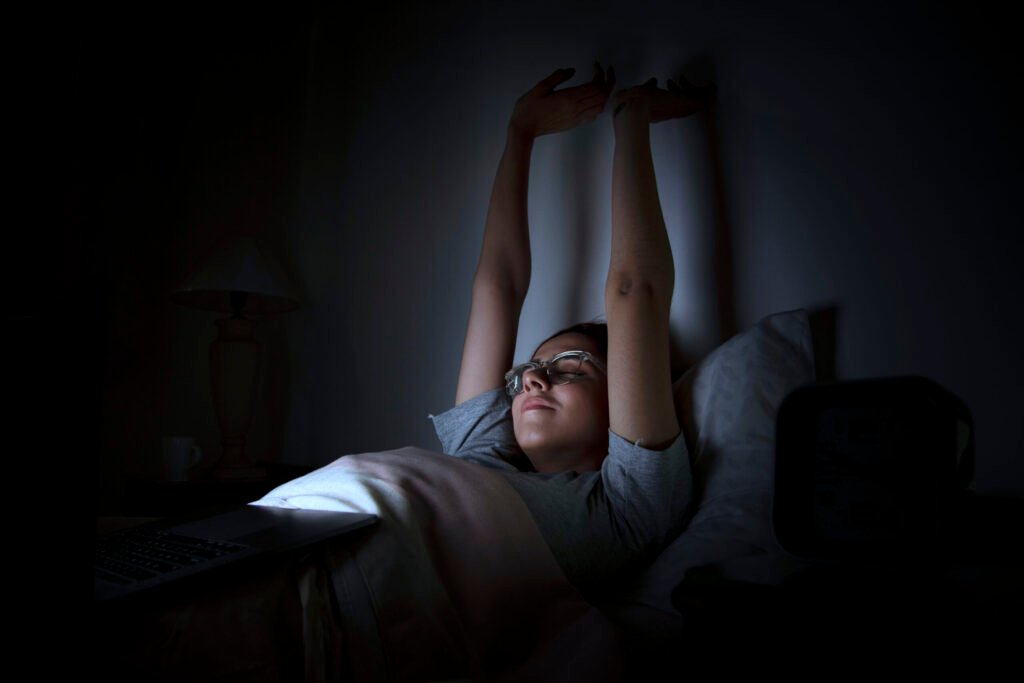Why You Can’t Just Force Sleep—But You Can Trick Your Brain Into Falling Asleep
Falling asleep isn’t always easy. If your mind races when you lie down, it might feel like sleep is just out of reach. The problem? You can’t force sleep—it comes naturally when your brain is ready. But you can trick your brain into falling asleep faster by using clever psychological hacks that reduce anxiety, calm your nervous system, and gently guide you into rest.
These techniques are based on research from neuroscience and sleep psychology—not just guesswork. They’re practical, simple, and don’t require any medication or complicated devices. Here’s how to start tricking your brain tonight.
1. 🧠 Try “Paradoxical Intention” to Ease Sleep Anxiety

One of the most effective and counterintuitive methods to trick your brain into falling asleep is called paradoxical intention. Instead of stressing over the need to fall asleep, you deliberately tell yourself to stay awake.
Why does this work? Anxiety about falling asleep causes tension, which keeps your brain alert. By trying to stay awake, you remove the pressure, which calms your nervous system and helps sleep come naturally.
2. Use the “Blink Fast, Then Stop” Technique
Physical signals play a big role in how your brain knows when it’s time to rest. The simple act of blinking rapidly for about a minute mimics tiredness.
Here’s how:
- Blink rapidly for 60 seconds.
- Close your eyes gently and relax.
This tells your brain that your eyes are fatigued, helping to lower mental alertness and making it easier to drift off.
3. 🕵️♂️ Offload Mental Clutter with a Brain Dump
One of the biggest sleep blockers is a busy mind. Writing down all your thoughts, worries, or to-dos—called cognitive offloading—helps your brain let go of the need to keep track.
Try keeping a notebook beside your bed and spending 5 minutes writing down whatever’s on your mind. This helps your brain trust it doesn’t have to work overtime when you’re trying to sleep.
4. Challenge Your Brain with a Boring Puzzle
A surprisingly effective way to trick your brain into falling asleep is to engage in a dull, repetitive mental task. Counting backward from 1,000 by sevens or spelling words backward works well.
Why? These tasks are just challenging enough to distract your brain from stressful or exciting thoughts, but boring enough to promote relaxation.
It’s a balance—too difficult, and you get frustrated; too easy, and your mind wanders. Finding the sweet spot helps your brain slow down into sleep mode.
5. 💡 Use Red or Amber Lighting to Protect Your Melatonin

Your circadian rhythm relies on light cues. Exposure to blue light (from screens or bright bulbs) before bed suppresses melatonin, the hormone that signals your body to sleep.
Switch to dim red or amber nightlights in your bedroom or bathroom. These wavelengths don’t interfere with melatonin production, helping your brain recognize it’s time to wind down.
For more on how light affects sleep, see the detailed info at the Sleep Foundation.
6. 🎵 Play Slow, Repetitive Instrumental Music

Music can be a powerful sleep aid when used right. Slow, repetitive instrumental music without lyrics encourages auditory habituation—your brain learns to tune out the sound, helping it relax.
Choose tracks around 60 beats per minute to help synchronize your heartbeat and breathing to a calm rhythm. Avoid songs that vary too much or have distracting lyrics.
7. 📺 Practice the “Mind TV” Visualization
If your mind won’t stop replaying stressful thoughts, try this mindfulness trick:
- Close your eyes and imagine a TV screen.
- Picture your thoughts as shows or channels.
- Watch passively, without reacting or engaging.
This mental detachment reduces emotional arousal, helping your brain transition to rest. It’s a simple visualization that many find easier than traditional meditation.
Bonus: Combine These Techniques for Maximum Effect
Using several of these tricks in sequence can create a powerful bedtime routine:
- Brain dump to clear thoughts
- Blink fast, then close eyes
- Count backward by sevens
- Use paradoxical intention if needed
This layered approach gently guides your brain to relax and fall asleep naturally.
Conclusion: Take Control Tonight by Tricking Your Brain Into Falling Asleep
Sleeping better doesn’t always mean more hours in bed or fancy gadgets. These seven simple, science-backed methods show how you can trick your brain into falling asleep faster—no stress, no apps, no pills.
Give one or two a try tonight, and see how your sleep improves. Better rest is within your control.
Which trick will you try first to trick your brain into falling asleep? Let us know!

















